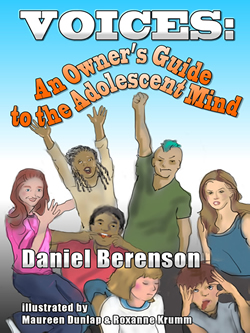Oral reading is an essential, yet unwieldy, component of any Language Arts teacher’s array of assessment tools. How else can a teacher know if students can actually pronounce words correctly without having them engage in oral reading? But having children read in turn from a textbook is a less-than-productive activity for the following reasons:
1. Only one child can participate at a time, leaving the other students to politely wait their turn (or stare off into space in boredom).
2. The student “on the spot,” particularly if her/his skills are not top-notch, can feel intense pressure, being put in “the spotlight” in front of peers. Therefore the student often underperforms and the teacher is forced into the position of “serial corrector,” which in turn puts even more pressure on the student.
3. Many students when reading orally put so much of their concentration into the reading itself, they don’t comprehend the material’s message. If you ask them what they just read, they often can’t tell you.
4. Lengthy sentences with interior punctuation, or—Heaven Forbid—a question mark, can totally flummox an oral reader. The individual words come out, but there is no flow to the sentence. Does the teacher let that pass or does the student have to trudge through the passage again?
It is any wonder that Dr. Seuss-type readings are so beneficial in the early grades? The good doctor’s lines are short, punchy, and they usually end with rhymes that will be echoed a line or two later. An oral reader can quickly establish a rhythm that carries throughout their “performance.” Even if a first attempt is tricky, practicing the poem on one’s own can actually become fun. The teacher can initiate “a game” (if you will) in which four or five students in a row recite the same four lines with their own flair and interpretation. It comes close to music.
The same cannot be said for “Fire and Ice” by Robert Frost, an exquisite poem, and one of the most utilized poems in middle grade textbooks. Here it is:
Some say the world will end in fire,
Some say in ice.
From what I’ve tasted of desire
I hold with those who favor fire.
But if it had to perish twice,
I think I know enough of hate
To say that for destruction ice
Is also great
And would suffice.
Yes, it’s potent, profound, intricate, and beautiful in its mystery, but does it “reach” most sixth graders? Can most adults tell you what it means?
Here’s the opening to the VOICES poem “My Beautiful, Ugly Present” by Daniel Berenson:
My best present ever may gross you all out,
It’s not usually something you talk about,
It’s not even something I like to reveal,
It can make my best friends start to squeal,
It’s a scar on my chest and it’s hideous and gross,
It’s red and it’s long, but what matters the most
Is to me it’s a work of exquisite art,
It’s the place doctors opened to work on my heart.
No, it’s not Frost, and doesn’t pretend to be, but it is readily accessible to middle schoolers, it can easily be discussed by middle schoolers, and it would be far more interesting as an oral exercise or presentation than many materials used now.

VOICES is a collection of 45 poems, all written in the first person, all by hypothetical kids who populate every classroom. They tell their stories in verse, and almost always in rhyme. Many of the poems have more than one speaker and some have “Greek choruses” who comment on the main speaker’s desires and actions. Therefore, it’s much easier to involve a group of students in one reading.
Every poem in VOICES was written with the intention that it be performed, either in front of an audience or in front of a camera. (See “The Science Project” at YouTube for an example.) VOICES is meant to bridge the gap between children’s poetry and the “grown-up” poetry that early adolescents will soon be asked to study and analyze. Its topics range from the comic to the tragic and children will recognize or identify with many of its narrators.
If you want to make oral reading both productive and fun, you cannot do better than VOICES: An Owner’s Guide to the Adolescent Mind (Poems for Performance). Check out a number of the poems for free at the following platforms:
Amazon.
Apple.
Barnes & Noble.
Also there are lesson plans created by the author for all the poems so that they may be used as mini-literature units in the classroom. They will be released in a separate volume shortly.